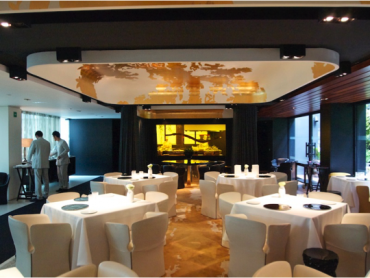In Vino Veritas LXXVI: Wine Needs Education
Bear with me on this one, as I see troubles ahead for restaurant wine sales in the not-too-distant future. It comes down to two major economic forces and their effects on overall customer behavior.
On the one hand, the younger generations – millennials and centennials – have less disposable income relative to their parents’ generation. And on the other, global wine prices are continually inching upward relative to inflation due to a variety of macro-forces like increased worldwide demand stemming from the growth of developing nations and climate change negatively affecting total supply.
Together, these two factors mean that young people see wine purchases as an increasingly expensive gambit and will thus be less inclined to try a bottle and ingratiate themselves in the vast vinicultural world that helps keep people restaurants afloat. And without this exposure, there will be no emotional connection to said beverage.
But why is a personal bond important? Because with most non-essential items, a product’s value is largely derived from what people are willing to pay for it. For example, gold is a more valuable element than the far-more-versatile iron only because humans have been indoctrinated over the millennia to believe that its illustrious color gives it meaningful worth.
The same applies to wine, particularly those at the higher end of the spectrum for which distinguishing their unique and remarkable flavor profiles requires training and a development of one’s palate over time. But how can one come to appreciate – and thus value – expensive bottles if they have only scant experience with entry-level or mid-level producers?
A person who is spendthrift will need a lot of cajoling to opt for a $30 bottle instead of a $15 one and therefore will be less likely to experience the more robust beverage flavors that often accompany this shift in cost. And without this gradual exposure into higher tiers, the hefty price tag you have on the menu becomes all the harder to justify.
The scary part here is that with both of these abovementioned factors converging on the millennial and centennial populations, we may end up with a whole generation that is apathetic to how great your wine cellar is and unwilling to pay three or four times markup for your corkage services because they have next to zero passion for fine wine.
Of course, there will always be affluent patrons who can afford something off the top shelf or those prone to conspicuous consumption, these will start to wane until one day you are scratching your head wondering why your wine sales are so abysmal. Instead, you may see an upward trend in by-the-glass or specialty cocktail purchases, but while still good both of these are more effort for the dollar.
So, that’s my prediction and it’s going to creep up on you if you aren’t reading up on macroeconomic news articles. But what can you do about it? Or more specifically, how can you imbue a sense of passion into these cash-strapped youngsters so that they can inevitably ‘see the light’?
The first step towards appreciation is awareness. After all, how can someone care about something if they don’t know it exists or why it’s significant? On your end, this means injecting a bit of education into your wine list by perhaps explaining the grape varietals and their flavor profiles or talking about the region where your partnered wineries are located. This can be in writing or taught to your servers so they can convey it succinctly in person.
As a personal example, for a property out in British Columbia where I was asset manager, we want to create a sense of meaning for our wine cellar, so the first step was to theme the offerings. With this province in Canada becoming hotbed of some truly spectacular drops, we set about making over 90% of our inventory local, then embellished this fact throughout our marketing presentation as well as through a visual guide at the beginning of the binder. From there, all restaurant staff went through a full month of intermittent training to understand what makes B.C. wines special and how the menu reflects this.
Truth be told, this was a monstrous amount of work to get it all up and running, but the end result is that customers now understand us as a purveyor of the ‘best of B.C.’ and come specifically for some of our more interesting labels. And upon seating, many delight in perusing the full list, deepening their personal connection to wine the more they dig.
You can definitely do the same for your hotel restaurant. It will take a lot of work to counteract this mounting indifference that I foresee, but the long-term benefit is that your wine revenues won’t suffer.




